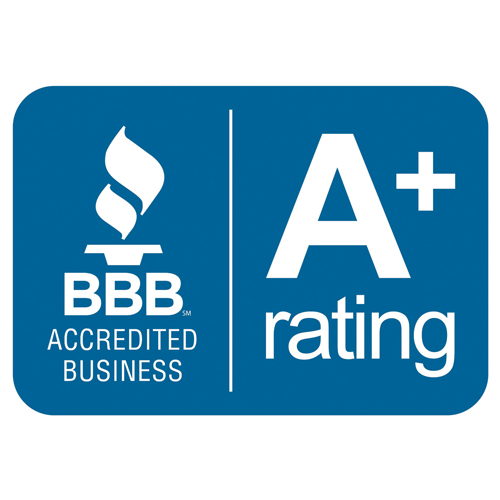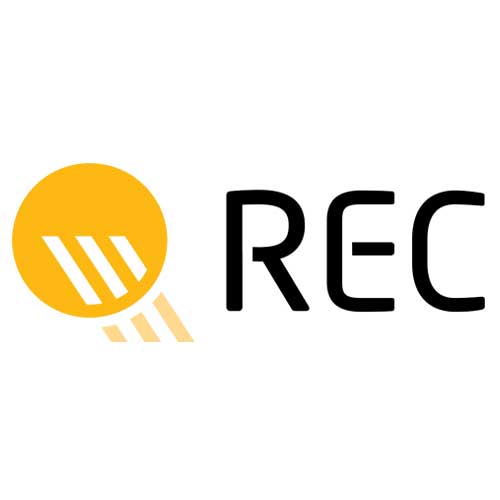How Many Years Does A Tesla Powerwall Last?
The Tesla Powerwall is a revolutionary, state-of-the-art home battery system that provides off-grid energy storage and backup power to homeowners. It has the potential to revolutionize the way people power their homes and reduce or eliminate dependence on utilities. But with such an advanced technology, the question remains: how many years will a Tesla Powerwall last?
In order for a battery system to be effective, it must have a long lifespan. Fortunately, the answer to this question is quite encouraging. The average life expectancy of a Tesla Powerwall is at least 10 years, but depending on usage and other factors, it can last much longer than that.
The longevity of a Tesla Powerwall largely depends on how it’s used and maintained over time. The more efficiently it’s used and maintained, the longer the battery will stay reliable and efficient throughout its lifetime. Usage habits like charging only when necessary, routinely maintenance, and avoiding extreme temperatures will all contribute positively towards its overall longevity.
How Many Cycles Does A Tesla Powerwall Last?
When it comes to the cycle life of a Tesla Powerwall, there are several factors that will determine its longevity. First, the type and size of the battery used in the system will play a role in how many cycles it can withstand before needing to be replaced. If a smaller capacity battery is used, it may only last around 2,000 cycles before needing to be replaced. On the other hand, larger capacity batteries could last up to 10,000 or more cycles depending on usage frequency.
The location of installation can also play a role in how many cycles a Powerwall can handle. For example, if installed in an area with extreme temperatures and humidity levels such as Arizona or Florida, then fewer cycles may be expected than if installed in milder climates such as California or Oregon. This is due to the fact that extreme climates put more stress on the battery components causing them to wear out faster than they would otherwise over time.
The amount of power drawn from a Powerwall each day and night will also affect its cycle life. If the unit is routinely discharged deeply (below 50 percent state of charge) this will cause tension on individual cells within the battery pack which could result in shorter cycle life than if deeper discharges were avoided altogether or limited only when necessary.
How To Tell If A Tesla Powerwall Needs To Be Replaced
The first way to tell if your Tesla Powerwall needs replacing is by looking at how long it can hold a charge. A healthy unit should last you between 8-10 years before needing replacement, depending on how much you use it and the temperature of your home. If the battery starts to lose its charge more quickly than usual or fails to hold a charge overnight, then that could be a sign that it’s time for a new one. You should also pay attention if you start experiencing more frequent brownouts or power outages than usual, as this could indicate that there isn’t enough stored energy left in the unit to meet your home’s needs.
Another way of telling if your Tesla Powerwall needs replacement is by paying attention to its physical condition. Over time, corrosion caused by wear and tear or exposure to the elements can cause damage and reduce the efficiency of the unit . If you notice any rusting, leaking liquid, discolouration or other signs of physical damage then you should have it checked out immediately – these are all indicators that something is wrong with the unit and that it may need replacing soon.
You should also be aware of any changes in performance when using your Tesla Powerwall over time. If you find yourself having more difficulty getting your solar system running than usual or having issues with inconsistent power delivery then it could be due to an aging battery pack within the unit itself. This is especially true if you find yourself struggling even when using just basic appliances such as lights and televisions – something which would usually take very little energy from the system but suddenly requires more than expected due to aging components inside of the device itself.
How Do You Extend The Life Of A Tesla Powerwall?
A Tesla Powerwall is a great investment for anyone looking to reduce their carbon footprint. Not only do they help to reduce your energy bills, but they can also last for up to 10 years. However, like any other electronic device, your Tesla Powerwall can eventually wear out. Luckily, there are a few things that you can do to extend the life of your Powerwall.
The first thing that you should do is decrease the depth of discharge (DOD). By doing this, you will help to keep the battery healthy and increase its lifespan. You can also reform the electrodes on a regular basis in order to rejuvenate them and increase their ability to store energy. Finally, make sure that your Powerwall is kept cool and free from damage – especially from water – and reduce charge/discharge cycles as much as possible.
Lastly, check the electrolyte level on a regular basis and make sure that it is in good condition by replacing it as needed. If everything looks good, you may be able to keep your Tesla Powerwall running for years to come!
Tips For Long-Term Storage Of A Tesla Powerwall
First and foremost, it is important to ensure that your Tesla Powerwall is properly charged before storing it away. This means making sure that the battery has been fully charged and all other necessary maintenance tasks have been performed prior to putting it in long-term storage. It is also important to check that all connections are secure and free from any corrosion before storing the device.
In order to keep your Tesla Powerwall in top condition while in storage, it should be stored in a cool, dry place away from direct sunlight as well as any harsh chemicals or corrosive substances. The optimal temperature range for storing your Tesla Powerwall should be between 10℃ (50℉) and 25℃ (77℉). Care should also be taken not to store your device near anything flammable or combustible materials.
Additionally, be sure to disconnect your Tesla Powerwall from any external system such as solar panels or wall outlets prior to storage, as leaving these connections active can lead to damaging voltage surges or other issues when the unit is turned back on again later. Also make sure that you turn off any programmable settings on the device prior to shut down so they don’t affect operation once you turn it back on again after storage.
How Much Power Does A Tesla Powerwall Store?
Hawaii has some of the highest electricity prices in the United States, and solar panels can help to reduce or eliminate your electric bill. The Tesla Powerwall is a home battery that stores solar energy and can last up to 10 years with proper maintenance. The Powerwall can provide backup power during an outage, and it can help you save money on your electric bill. Below, we’ll take a look at some of the features of the Tesla Powerwall and how it could benefit you.
The Tesla Powerwall has an average retail price of $3,000, but this price may vary depending on location. In addition to Hawaii, Nevada has the second-highest average retail price of electricity in the United States at $2,700 per month. However, SolarCity estimates that a SolarCity installation with eight panels will offset approximately 78% of an average person’s monthly electric expenses in Hawaii when comparing Energy Star rated products against typical Hawai’i usage patterns in order to achieve 20% savings*. So even if you don’t live in Hawaii or Nevada, installing a SolarCity system could still be beneficial because it would offset your monthly electric bill!
In addition to reducing or eliminating your electric bill with solar panels, another way to save money on your electric bill is by using energy conservation measures like turning off lights when not in use or using appliances during off-peak hours. The Tesla Powerwall is perfect for people who want backup power during an outage because it stores energy from solar panels so that you don’t have to rely on grid power alone. And finally, since the Tesla Powerwall uses household appliances like refrigerators and air conditioners as storage devices (instead of running them constantly), it can help reduce your overall carbon footprint by reducing demand for fossil fuels.
How Long Does A Tesla Powerwall Last?
Before we get into understanding how long a Tesla Powerwall lasts, it’s important to note that there are different types of Tesla Powerwalls. The original Tesla Powerwall is designed for indoor installation, while the latest version, called the Outdoor Energy Storage System (ES), is designed for outdoor use. Both systems have similar components but differ in their design and performance capabilities.
The lifespan of your Tesla Powerwall will depend on several factors such as environmental conditions, maintenance cycles, usage patterns, and more. It’s important to check the warranty information before investing in either type of system. Generally speaking, the typical lifetime expectancy for an indoor Tesla Powerwall is at least 10 years with proper maintenance and usage habits; however, this number can be significantly longer or shorter depending on these factors.
When considering the longevity of your Tesla Powerwall battery system it’s important to think about its charging cycle rate or estimated amount of charge cycles it can complete before needing replacement. The higher quality batteries used in the system will generally provide more charge cycles than lower quality batteries; however, they may cost more upfront but save you money over time since they won’t need to be replaced as often as lower quality models do.
Is A Tesla Powerwall Worth It?
Tesla’s Powerwall battery system is an energy storage device that has become increasingly popular in recent years. This system offers both residential and commercial customers the ability to store energy generated from their solar panels or other renewable sources and use it when needed, rather than relying on the traditional grid. The benefits of this technology are numerous and include increased reliability, lower electricity bills, and greater control over energy usage. But is a Tesla Powerwall worth it? To answer that question, let’s take a look at how the system works and some of the advantages it provides.
The Powerwall system consists of two parts: an inverter and a battery. The inverter takes the direct current (DC) produced by solar panels or other renewable sources and converts it into alternating current (AC), which can then be used by your appliances or fed back into the grid for credits with your utility provider. The battery stores this energy and ensures you have power even when the sun isn’t shining or when there is an interruption in service from your utility company. This makes it ideal for off-grid living as well as providing backup power during long power outages due to storms or natural disasters.
This technology also has several economic benefits for homeowners or businesses who choose to invest in a Tesla Powerwall system. Firstly, it effectively reduces electricity bills since those who install these systems have access to stored energy instead of relying solely on what comes from their local utility provider. Secondly, since these batteries can feed excess energy back into the grid, users can even earn credits which can be applied towards future bills. Thirdly, if installed with solar panels users will experience additional savings since they will no longer need to purchase electricity from their local utility provider at all; instead they will be able to rely on their own renewable resources for all of their electricity needs.
What Are The Pros And Cons Of Purchasing A Tesla Powerwall?
One of the major pros of purchasing a Tesla Powerwall is its ability to reduce monthly electricity bills by storing excess electricity generated by solar panels for later use at night or during power outages. This will enable households to take advantage of cheaper nighttime rates or even reduce their reliance on traditional grid supply altogether, making them less dependent on utility companies. Additionally, since the device can store newly generated solar energy for up to 10 years, owners don’t need to worry about losing valuable resources over time. In addition, with its easy installation process and convenient portability options, homeowners can easily move their Powerwall around both inside and outside their homes without any difficulty.
However, like other products, there are also some potential drawbacks associated with using a Tesla Powerwall system. For example, while these devices are relatively affordable compared to other options such as fuel cells, they still require an upfront investment which could be quite costly if you have limited financial resources available. Additionally, since they require professional installation and maintenance services from time-to-time there may be additional costs associated with setting up and running the unit properly. Furthermore, depending upon where you live in the world your local utility regulations may restrict your ability to store excess electricity generated during peak times for future use – thus limiting your ability to fully utilize this feature of your Powerwall system.
What Are The Pros And Cons Of A Tesla Powerwall?
The Pros of a Tesla Powerwall:
- Cost Efficiency: One of the biggest advantages of the Tesla Powerwall is its cost efficiency. Since the unit itself is relatively low-cost compared to traditional power sources, it can help homeowners save money on their electricity bills. This savings can be further enhanced when combined with other renewable energy sources such as solar panels or wind turbines, which make up for any additional energy needed during peak usage times.
- Simplicity: Another pro of using a Tesla Powerwall is its simplicity; it requires little technical knowledge or experience in order to install and maintain the unit. Additionally, users do not need to change their existing wiring or hardware when installing the system, which makes it easier for homeowners without any kind of electrical expertise to set up their own system at home.
- Capacity: Unlike most other battery solutions on the market today, the Tesla Powerwall has an impressive capacity of 13kWh per unit—enough to power several households for over 24 hours without needing any additional batteries or fuel sources. This makes it perfect for those who need an emergency source of backup power in case of power outages or other unforeseen events.
- Reliability: With its highly advanced lithium ion battery pack along with intuitive software technology designed by Tesla, homeowners can rest assured that their system will be reliable and durable over time even in extreme weather conditions or temperature fluctuations throughout the year.
The Cons of a Tesla Powerwall:
- Installation Costs: One possible downside to having a Tesla Powerwall installed is that there are associated installation costs involved depending on your location and local regulations—a fact which may put off some potential buyers who don’t want to incur extra fees just for setting up their system properly.
- Battery Life Expectancy: Although most lithium-ion batteries last around 10 years before they start to degrade significantly (which isn’t much longer than traditional lead-acid batteries), this still means that you will likely have to replace your unit at least once within that time frame depending on how frequently you use it—and replacing a unit could potentially be costly depending on where you live and what kind of maintenance/repair contracts you have in place for your device(s).
- Size/Weight Limitations: While powerful and efficient compared to other types of batteries out there, Tesla Powerwalls are still quite large and heavy compared to some alternatives—so if space/weight limitations are an issue then you may want to look into alternative solutions instead (such as smaller grid-tied systems). Additionally, they require special mounting solutions due to their weight which may be difficult (or even impossible) on certain structures/surfaces such as stucco walls or thin roofs that cannot handle too much pressure being applied onto them from above.
All In All
Finally, another factor that contributes heavily towards the life expectancy of your Tesla Powerwall pertains specifically to quality control standards put in place by majority manufacturer Tesla themselves; these standards require rigorous testing of their batteries before deployment as well as ensuring optimal component quality so you don’t get stuck with an unreliable product in the first place! All this said then it’s clear why these systems have such exceptionally long lifespans—with upstanding use habits & regular maintenance coupled with topnotch quality assurance & rigorous testing measures put in place by Tesla themselves there’s no surprise why these systems continue lasting well beyond their expected 10 year lifespan!









